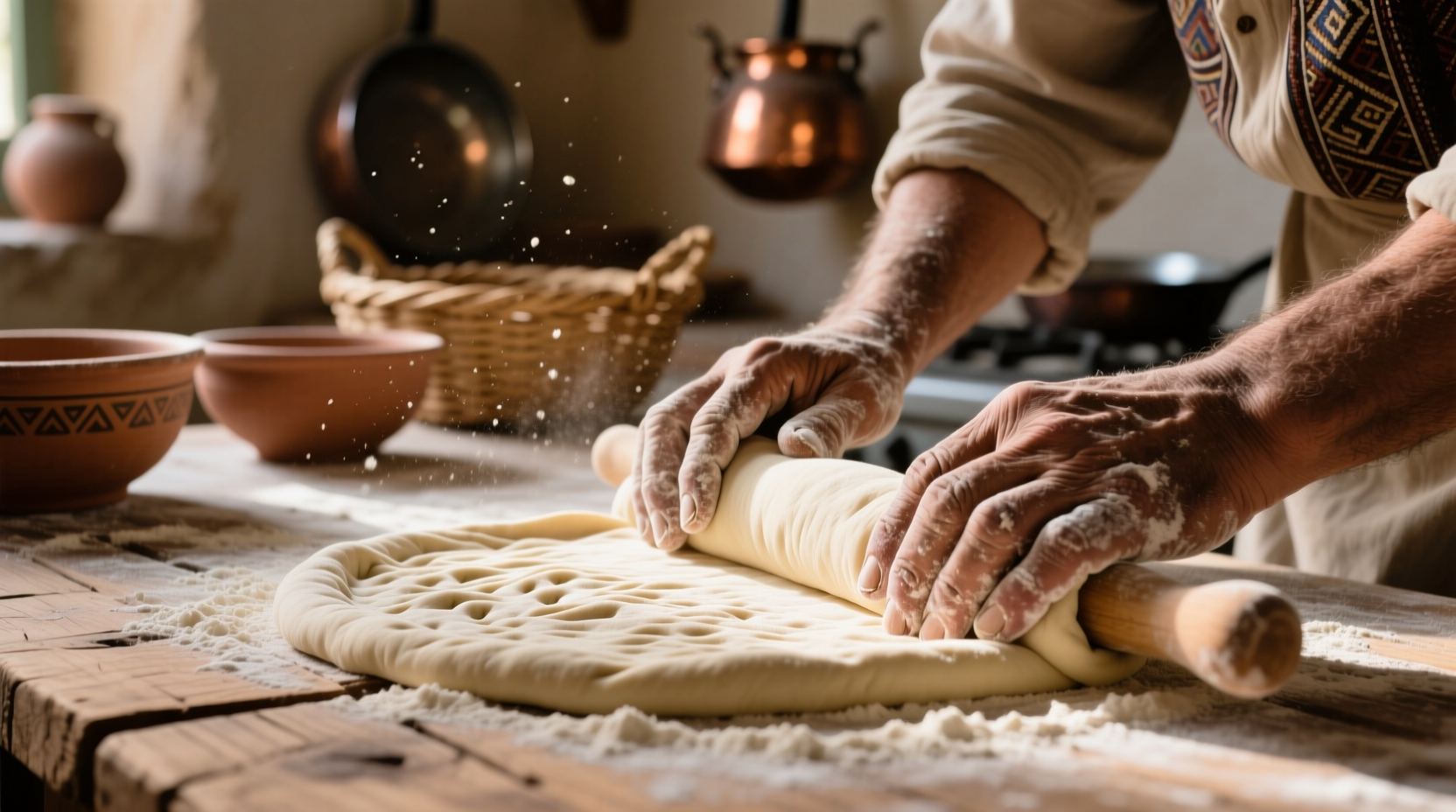Unleavened bread requires just three basic ingredients—flour, water, and salt—and takes under 30 minutes to prepare and cook. This ancient flatbread has been made for thousands of years across cultures, most notably as matzo in Jewish tradition and roti in Indian cuisine, with no rising time needed since it contains no yeast or leavening agents.
Have you ever wondered how to make authentic unleavened bread that's perfectly thin, pliable, and flavorful? Whether you're preparing for a religious observance, exploring historical cooking methods, or simply want a quick flatbread option, this guide delivers everything you need to create flawless unleavened bread at home. You'll learn the precise ingredient ratios, proper kneading techniques, and cooking methods that prevent common issues like tearing or excessive browning.
Why Unleavened Bread Matters Across Cultures
Unleavened bread represents one of humanity's oldest food traditions, with archaeological evidence dating back to 7,000 BCE. Unlike regular bread, unleavened varieties contain no yeast, baking powder, or other rising agents, resulting in a flat, dense texture that's both practical and symbolic. Many cultures incorporate unleavened bread into religious ceremonies—Jewish communities eat matzo during Passover to commemorate the Exodus, while Christian traditions use unleavened hosts for communion.

Gathering Your Ingredients and Tools
The beauty of traditional unleavened bread lies in its simplicity. You'll need only three pantry staples:
- All-purpose flour (2 cups)
- Water (3/4 cup, lukewarm)
- Salt (1/2 teaspoon)
For best results, use a kitchen scale to measure ingredients by weight rather than volume. Professional bakers recommend 250g flour, 180g water for accurate hydration levels. You'll also need basic equipment: a mixing bowl, rolling pin, clean work surface, and either a cast-iron skillet or traditional tava (Indian griddle).
Step-by-Step Preparation Process
Follow these precise steps for perfect unleavened bread every time:
- Mix ingredients: Combine flour and salt in a bowl, then gradually add water while stirring until a shaggy dough forms
- Knead properly: Transfer to floured surface and knead for 5-7 minutes until smooth and elastic (over-kneading causes toughness)
- Rest the dough: Cover with damp cloth for 15-20 minutes to relax gluten (critical for easy rolling)
- Divide portions: Cut into 4 equal balls for standard 8-inch breads
- Roll carefully: Flatten each ball with rolling pin to 1/8-inch thickness, rotating frequently to prevent sticking
- Cook immediately: Transfer to preheated 400°F (200°C) cooking surface
Cooking Techniques for Perfect Results
Master these cooking methods to achieve professional-quality unleavened bread:
For stovetop cooking: Heat a dry cast-iron skillet over medium-high heat. Place rolled dough on hot surface—it should start bubbling within 30 seconds. Cook for 60-90 seconds until golden brown spots appear, then flip and cook 30-60 seconds on second side. The bread should puff slightly but remain flat.
Oven method: Preheat oven with baking stone to 500°F (260°C). Bake rolled dough directly on stone for 2-3 minutes until edges curl and surface shows light browning. This method works well for larger batches.
| Cooking Method | Temperature | Time Per Side | Best For |
|---|---|---|---|
| Cast-iron Skillet | Medium-high | 60-90s / 30-60s | Traditional matzo, tortillas |
| Baking Stone | 500°F (260°C) | 2-3 minutes total | Multiple pieces, consistent results |
| Open Flame | Direct heat | 15-30 seconds per side | Authentic puffed flatbreads |
Troubleshooting Common Issues
Even experienced bakers encounter challenges with unleavened bread. Here's how to solve frequent problems:
Dough too dry/crumbly: Add water 1 teaspoon at a time during mixing. Ideal dough should feel like firm earlobe—yielding but not sticky.
Bread tearing when rolling: Let dough rest longer (up to 30 minutes). Gluten needs time to relax for proper elasticity.
Excessive browning/burning: Reduce heat by one level. Unleavened bread cooks quickly—medium-high is usually sufficient.
Bread remains pale: Increase heat slightly or cook longer. Proper unleavened bread should have golden brown spots, not uniform color.
Historical Evolution of Unleavened Bread
Understanding the historical context helps appreciate why specific techniques matter. Archaeological findings show unleavened bread predates leavened varieties by millennia:
- 7000 BCE: Earliest evidence of flatbread cooking in stone ovens from Turkey's Çatalhöyük settlement (per Nature Scientific Reports)
- 1500 BCE: Biblical references to matzo during Exodus narrative
- 300 BCE: Indian texts describe roti preparation methods still used today
- 1500 CE: Spanish colonizers document Native American tortilla preparation
- Present day: Global variations maintain cultural significance while adapting to modern kitchens
Cultural Variations and Their Unique Characteristics
While all unleavened breads share the no-yeast principle, regional variations offer distinct textures and flavors. Recognizing these differences helps select the right technique for your needs:
The key distinction lies in hydration levels and cooking methods. Middle Eastern lavash uses higher water content (60%) for flexibility, while traditional Jewish matzo maintains strict 24-minute preparation from water contact to baking completion, as documented in the Shulchan Aruch religious code.
Serving and Storage Recommendations
Enjoy unleavened bread at its peak freshness for best texture and flavor. Serve warm with:
- Traditional dips like hummus or tzatziki
- As wraps for grilled vegetables or meats
- With olive oil and za'atar seasoning
- As accompaniment to stews and curries
Store cooled bread in airtight container for up to 3 days. For longer storage, freeze between parchment paper layers for up to 3 months. Reheat in dry skillet for 20-30 seconds to restore freshness—never use microwave which creates sogginess.
Perfecting Your Technique Through Practice
Mastering unleavened bread requires attention to detail but becomes intuitive with practice. Focus on these professional tips:
Monitor dough hydration closely—flour absorption varies by humidity and brand. Experienced bakers adjust water content by 5-10% based on environmental conditions. When rolling, apply even pressure from center outward to maintain consistent thickness. For authentic results, cook on ungreased surface—oil creates steam pockets that cause uneven cooking.
Professional chefs recommend making multiple batches to develop muscle memory. Your first attempt might be imperfect, but by the third batch you'll notice significant improvement in rolling consistency and cooking timing.











 浙公网安备
33010002000092号
浙公网安备
33010002000092号 浙B2-20120091-4
浙B2-20120091-4